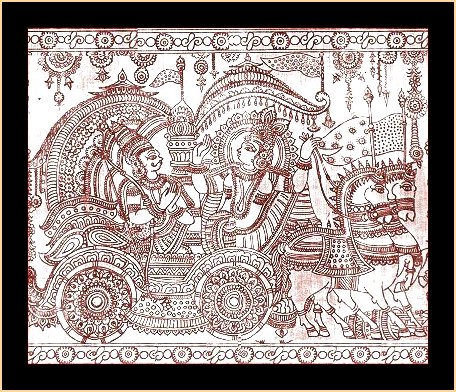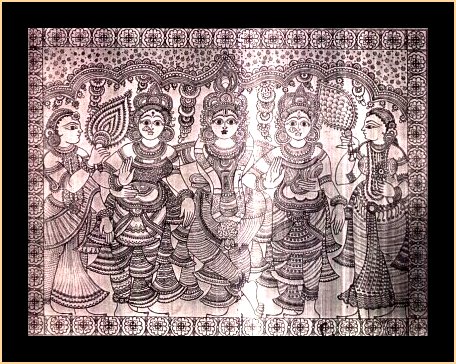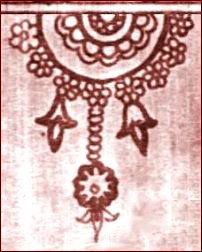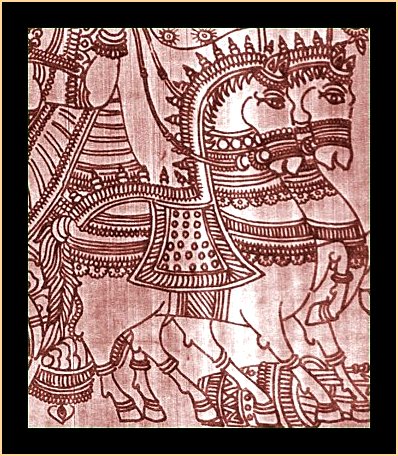PAINTINGS
KALAMKARI PAINTINGS
April 2006


Kalamkari literally means, Kalam
- pen & kari - work, i.e., art work done using a pen. Vegetable
dyes are used to colour the designs applied on cloth. The art of
painting using organic dyes on cloth was popular in several parts of India,
but this style of Kalamkari flourished at Kalahasti (80 miles north of
Chennai) and at Masulipatnam (200 miles east of Hyderabad).
The Kalamkari tradition chiefly consists
of scenes from Hindu mythology. Figures of deities with rich border embellishments
were created for the temples. In Masulipatnam, the weavers were involved
in the block printing art, while at Kalahasti, the Balojas (a caste involved
in making bangles) took to this art.
Owing to Muslim rule in Golconda,
the Masulipatnam Kalamkari was influenced by Persian motifs & designs,
widely adapted to suit their taste. The outlines and main features
are done using hand carved blocks. The finer details are later done
using the pen. Under the British rule the designs as well as the
end use of the fabric differed - for garments as well as furnishings.
During this period floral designs were popular. The artisans were
made to create even portraits of English men.
The Kalahasti tradition which developed
in the temple region mostly concentrated on themes form Hindu mythology,
epics (Ramayana, Mahabharatha), images of Gods and heroes.
The artists use a bamboo or date
palm stick pointed at one end with a bundle of fine hair attached to this
pointed end to serve as the brush or pen.
The dyes are obtained by extracting
colours form parts of plants - roots, leaves along with mineral salts of
iron, tin, copper, alum, etc., which are used as mordants.
Karrupur is a style of Kalamkari
that developed in the Thanjavur region during the Maratha rule. The
Kalamkari work was a further embellishment to the gold brocade work in
the woven fabric, which was used as sarees & dhotis by the royal family
during the period of Raja Sarfoji and later Raja Shivaji.
After independence of India, the
Handicrafts Development Board took up the task of reviving this art, which
had dwindled due to lack of buyers.
The specialty is that the finished
products are mellow. Bright colours are used but the finish is not
gaudy. The fabric looks better and better with further washing, with the
designs standing out even better against the background.
Some
patterns (sections of paintings)




Motifs from Kalamkari style of painting
Jayanth
Kalamkari designs
Manufacturer and wholesaler of pure
vegetable print kalamkari sarees, fabrics,
dress materials, kurtis, patch work kurtis
and sarees, shawls, bedsheets, table
cloths, door curtains, wall panels - non
chemical and easy to maintain, long
lasting and color fast.
Indian Heritage's Pinterest Collection of Kalamkari
|